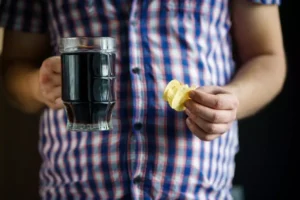When you have a drinking problem, your brain reacts to these triggers differently than a social drinker’s does. Symptoms of alcohol use disorder are based on the behaviors and physical outcomes that occur as a result of alcohol addiction. If your loved one is suffering from alcoholism, there is help. Our highly credentialed staff members offer a full range of progressive treatment options based on each patient’s individual needs, including teletherapy. We’re ready to help your loved one begin the journey to recovery — contact us to learn more about personalized, comprehensive treatment plans.
- If you’re trying to conceive, your partner should drink no more than 14 units of alcohol a week, which should be spread evenly over 3 days or more.
- They’ll be able to discuss the services and treatments available.
- Once stabilized, the goal is to transition from detox, to treatment, to maintenance (practicing sober living by changing your life), to transcendence—the final step in the path to recovery.
- If you don’t have any symptoms, then staying within the limits provided in the 2020–2025 Dietary Guidelines for Americans could reduce your chances of having problems in the future.
Cardiovascular Health
Some common signs and symptoms of cirrhosis include fatigue, itchy skin, weight loss, nausea, yellow eyes and skin, abdominal pain and swelling or bruising. By the time a person is in end-stage alcoholism, there can be no denying that drinking has taken over their life and damaged their health. Recovery will not be easy at this point, but it will be worth the work. Now is the time to line up support from addiction specialists, mental health professionals, friends and family, and others living with an alcohol use disorder. Alcohol use disorder (sometimes called alcoholism) is a common medical condition. People with this condition can’t stop drinking, even if their alcohol use upends their lives and the lives of those around them.
Chronic Pancreatitis
Hangovers also cause problems like missed class or work, low quality work or schoolwork, and lost productivity. Anxiety, insomnia, sweating, nausea and high heart rate are all signs of alcoholism. In some people, the initial reaction may feel like an increase in energy. But as you continue to drink, you become drowsy and have less control over your actions. Alcohol use disorder can include periods of being drunk (alcohol intoxication) and symptoms of withdrawal.
Self-testing: Do I misuse alcohol?
Alcohol use disorder can cause serious and lasting damage to your liver. Your liver is responsible for removing toxins from your physical signs of alcoholism blood. When you drink too much, your liver has a harder time filtering the alcohol and other toxins from your bloodstream.
If someone you know meets at least two of the following criteria, they may have an alcohol use disorder and need help. Treating alcohol use disorder requires managing a few different things, including detox, treating the underlying addiction and also offering aftercare and support for continued sober living. There are both immediate and long-term effects of alcohol abuse on the body and brain. Treatment for alcoholism often involves a combination of therapy, medication, and support. If you think you might have an alcohol use disorder or if you are worried that your alcohol consumption has become problematic, it is important to talk to your doctor to discuss your treatment options.
Understanding Alcohol Use Disorder
Some people may drink alcohol to the point that it causes problems, but they’re not physically dependent on alcohol. People with alcohol use disorder will continue to drink even when drinking causes negative https://ecosoberhouse.com/ consequences, like losing a job or destroying relationships with people they love. They may know that their alcohol use negatively affects their lives, but it’s often not enough to make them stop drinking.
- Mutual-support groups provide peer support for stopping or reducing drinking.
- It’s easy to underestimate the amount of alcohol you consume daily or weekly, especially in social settings when others around you are doing the same.
- The condition is likely the result of a combination of genetic, social, psychological, and environmental factors.
Comments are closed.





